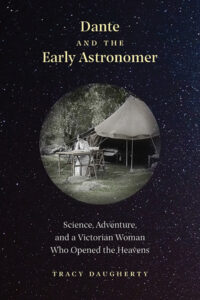In 1959, C. P. Snow, the noted British chemist and novelist, delivered the Rede Lecture at Cambridge University that has come to be far more discussed and debated than perhaps any other of such in the past century. In his The Two Cultures, as it was later published, Baron Snow described the existence of two distinct cultures that he saw having formed in academia, and to a greater extent in the educated western world at large. One was a culture of science, the other a culture of the humanities; both governed by their own intellectual landmarks, the representatives of the two cultures – so he explained – were growing farther and farther apart, to the point where they were beginning to fail at even being able to communicate with one another in any meaningful way. This failure, he proclaimed, was harming the ability of the world’s most intelligent people to come together to work on solving the world’s most pressing problems.
Fifty-five years earlier, however, as the result of her love for the verses of Dante and her fascination with astronomy, “M.A. Orr” – Mary Acworth Orr Evershed – saw the publication of her Dante and the Early Astronomers; a study of both astronomical observations as represented in the Greek and Roman classics as well as in the works of Dante Alighieri. It is to the title of her book that Tracy Daugherty makes reference in his own recently published Dante and the Early Astronomer; Science, Adventure, and a Victorian Woman Who Opened the Heavens, in which he recounts the life and work of the remarkable Ms. Evershed.
Far from being in one or the other of Baron Snow’s two cultures, as an enthusiast of literature and history, as well as an ardent amateur astronomer, she was equally at home in them both. It was what gave her the ability to bring together elements of each in order to discover as well as solve something that had perplexed commentators for centuries: the positions and significances of visible celestial bodies in Dante’s Divina Commedia. Had she not been so thoroughly versed in Dante – which she could read in the original Italian (and likely had largely memorized) – she would not have been familiar with the many astronomical references that appear in his writings, and had she not been so skilled in astronomy (her first published book, Southern Stars: A Guide to the Constellations Visible in the Southern Hemisphere, written while she was living in Australia, was the first English language book to take up this subject) she would not have been able to identify them or discern their significance and accuracy – or lack thereof.
But is wasn’t just what Dante – and others who came before him – included in their writings, both in verse as well as in early works of natural philosophy, it was what they could have seen for themselves that intrigued her. Remember, Dante wrote his famous verses three centuries prior to Hans Lipperhey’s invention of the telescope (Galileo copied later models of it), so whatever Dante, his contemporaries, and all who came before him saw when they turned their eyes to the night skies, they saw unaided. What could they have reasonably seen – and what could they have understood about it? To this she turned her mind, bringing interpretations both scientific as well as poetic to the problem in pursuit of a solution.
Prof. Daugherty delves deeply into this, as well as into the globe-spanning life of Ms. Evershed. From her early childhood in England, to the move with her family to Australia, to her solar eclipse-chasing courtship and later marriage with the astronomer John Evershed and their life together at the hilltop observatory at Kodaikanal, India, to her travels to the United States, he chronicles a life richly lived in adventure, intellectual inquiry, and scientific discovery.
To this he also adds a number of side journeys of his own into aspects of the history of science, most especially astronomy and physics. Envisioning a three part division to these subjects, beginning with Dante, progressing to Newton, and continuing to Albert Einstein, Prof. Daugherty explores the significance of the changes wrought by the ideas of these three men. And as Ms. Evershed and her husband John were keenly interested in solar astronomy, particularly eclipses, the famous solar eclipse of 29 May, 1919, in which Sir Frank Watson Dyson and Sir Arthur Eddington were finally able to test Einstein’s theory of the Sun gravity bending light, makes a prominent appearance.
Dante and the Early Astronomer left me with pages of notes filled with newly discovered facts and previously unconsidered concepts, as well as ideas for further thought, and half a dozen books to be sought out and read. It also left me with the knowledge of not only the existence of Ms. Evershed but a lively portrait of her life; a portrait upon which to gaze and reflect whenever I find the world proving Baron Snow’s 1959 thesis far too accurate for comfort. Mary Acworth Orr Evershed most decidedly deserves to be remembered, both for her intellect as well as for her perseverance against far too many rules of her time regarding what men thought they had the right to allow women as well as from what to prohibit them. Her’s was indeed a cross cultural life, and we are all the richer for her having lived it.
 Title: Dante and the Early Astronomer; Science, Adventure, and a Victorian Woman Who Opened the Heavens
Title: Dante and the Early Astronomer; Science, Adventure, and a Victorian Woman Who Opened the Heavens
Author: Tracy Daugherty
Publisher: Yale University Press
Format: hardcover
Pages: 232 pp. w/ 27 b/w illus.
ISBN: 9780300239898
Published: April 2019
In accordance with Federal Trade Commission 16 CFR Part 255, it is disclosed that the copy of the book read in order to produce this review was provided gratis to the reviewer by the publisher.
